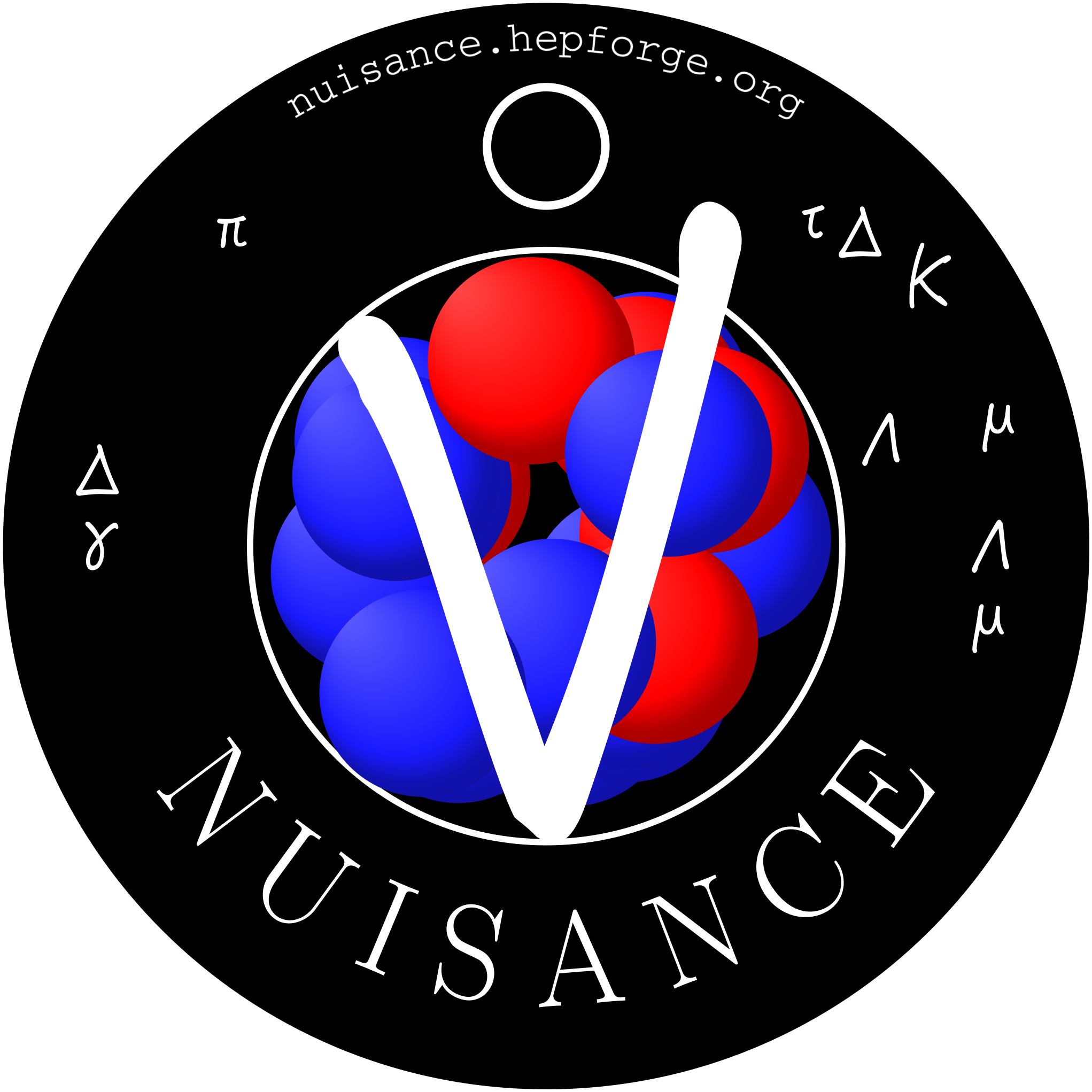close
Warning:
Can't synchronize with repository "(default)" ("(default)" is not readable or not a Git repository.). Look in the Trac log for more information.
- Timestamp:
-
Jan 6, 2017, 2:01:43 PM (8 years ago)
- Author:
-
Clarence Wret
- Comment:
-
--
Legend:
- Unmodified
- Added
- Removed
- Modified
-
|
v38
|
v39
|
|
| 198 | 198 | {{{ |
| 199 | 199 | #!div class=important |
| 200 | | If the cross-section is not in cm^2^/nucleon but instead cm^2^/CH (or any other molecule) you will have to scale the `fScaleFactor` by the number of available target nucleons. For CCQE, nu,,mu,, interactions only occur off neutrons, which we have 6 of in CH. But the total number of nucleons in CH is 13. So if an experiment reports cross-section in cm^2^/CH we need to do `fScaleFactor*=13./6.`. |
| | 200 | If the cross-section is not in cm^2^/nucleon but instead cm^2^/CH (or any other molecule) you will have to scale the `fScaleFactor` by the number of available target nucleons. |
| | 201 | |
| | 202 | For CCQE, nu,,mu,, interactions only occur off neutrons, which we have 6 of in CH. But the total number of nucleons in CH is 13. So if an experiment reports their cross-section in cm^2^/CH for CCQE nu,,mu,, and our generator output is cm^2^/nucleon we need to do `fScaleFactor*=13./6.`. |
| | 203 | |
| | 204 | If instead an experiment measures a CC1pi^+^ cross-section in `cm^2^/CH`, we scale by a factor 13 because CC1pi^+^ happens on both neutrons and protons. |
| 201 | 205 | }}} |
| 202 | 206 | |
